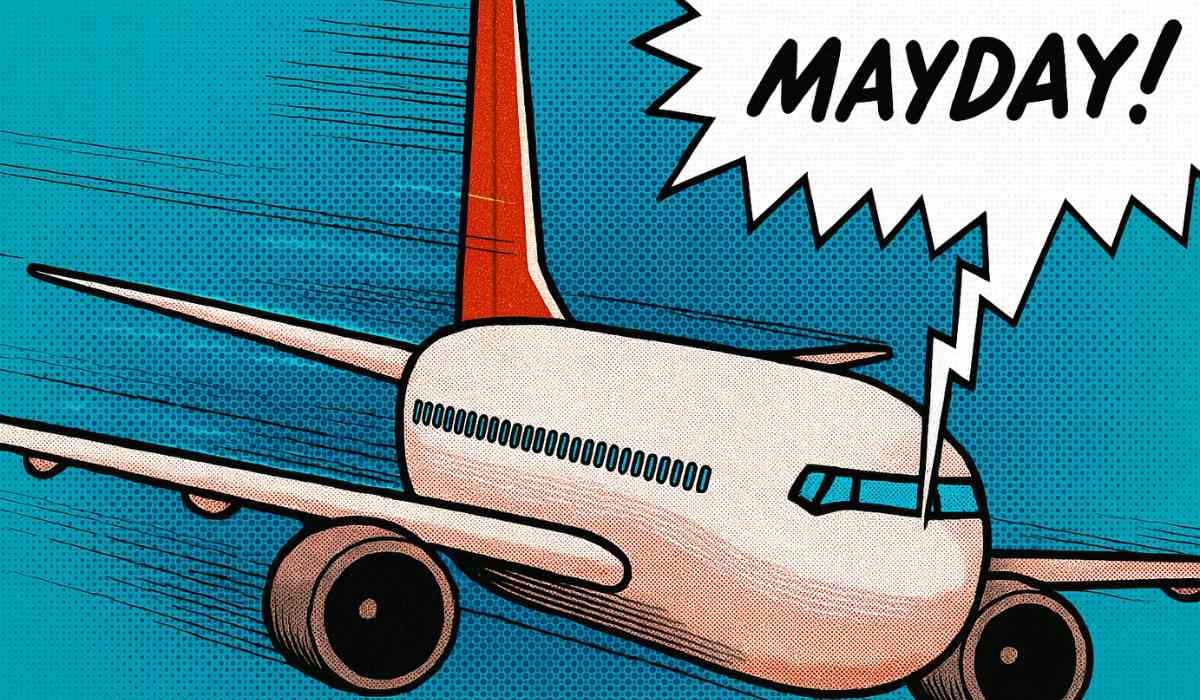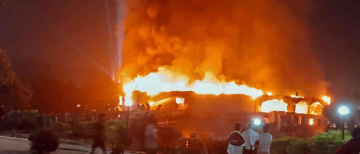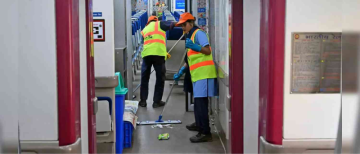On June 12, 2025, a tragic event unfolded in Ahmedabad when an Air India flight bound for London crashed shortly after takeoff. The incident shocked the nation and raised many questions about what happened in those critical moments before the crash. One term that stood out in reports was the "Mayday" distress call issued by the pilot. But what does "Mayday" really mean, and why is it so important in aviation emergencies?

The Air India flight AI171, a Boeing 787-8 Dreamliner, took off from Ahmedabad's Sardar Vallabhbhai Patel International Airport at 1:39 pm, carrying 242 people, including two pilots, ten cabin crew, and 230 passengers. Just minutes after takeoff, the plane crashed in the Meghaninagar area, close to the airport perimeter. The Directorate General of Civil Aviation (DGCA) confirmed that the pilot, Captain Sumeet Sabharwal, made a "Mayday" call to Air Traffic Control (ATC) before the aircraft lost contact and crashed.
What Is a 'Mayday' Call?
A "Mayday" call is a universal distress signal used in aviation and maritime communication. When pilots declare "Mayday" over the radio, it means they are facing a life-threatening emergency and need immediate help. It is the most urgent call for assistance and is only used in the gravest situations, such as severe technical failures, fire, loss of control, or other critical dangers.
The word "Mayday" comes from the French phrase "m’aidez," which means "help me." It is repeated three times—"Mayday, Mayday, Mayday"—to ensure there is no confusion, especially in noisy or stressful situations.
Why Did the Pilot Use a Mayday Call?
According to reports, the aircraft reached a maximum altitude of just 825 feet before it began to descend rapidly. This sharp loss of altitude suggests a serious emergency, possibly involving engine failure, loss of control, or instrumentation problems, though the exact cause is still under investigation. When Captain Sabharwal realized the situation was critical, he followed international protocol by issuing a Mayday call to alert ATC and request urgent assistance.
What Happens After a Mayday Call?
_1749729440.png)
When a Mayday call is received, it triggers immediate action from air traffic controllers and emergency services. The controllers prioritize the distressed aircraft, clear other traffic, and prepare for emergency response on the ground. Firefighters, ambulances, and rescue teams are dispatched to the expected landing or crash site as quickly as possible.
In this case, after the Mayday call, there was no further response from the aircraft. The plane crashed within minutes, and thick black smoke was seen rising from the site. Emergency teams rushed to the scene, rescuing survivors and treating the injured.
Why Is the Mayday Call So Important?
The Mayday call is a vital part of aviation safety. It ensures that everyone—controllers, ground staff, and rescue teams—knows there is a dire emergency and can act without delay. For pilots, declaring Mayday is not an easy decision. It means the situation is beyond their control and all possible help is needed immediately.
By issuing the Mayday call, Captain Sabharwal acted according to his training and international aviation standards. This gave ground teams precious seconds to prepare, even though, tragically, the outcome was severe.
What Can We Learn?
_1749729602.png)
Aviation is one of the safest modes of transport, thanks to strict protocols and highly trained professionals. The Mayday system is just one example of how safety is built into every flight. When something goes wrong, clear communication and quick action can make the difference between life and death.
This incident also highlights the immense responsibility pilots carry and the importance of following established emergency procedures. While the investigation will reveal more details about what caused the crash, the use of the Mayday call shows the crew did everything possible to alert authorities and seek help.

The Ahmedabad crash is a somber reminder of the risks involved in air travel, even with all the safety measures in place. The "Mayday" distress call is a critical tool that gives pilots a direct line to help when every second counts. As the investigation continues, the focus remains on supporting the victims and learning from the tragedy to make flying even safer in the future.
Understanding what "Mayday" means helps us appreciate the complexity and seriousness of aviation emergencies. It is a call for help that unites everyone—pilots, controllers, and rescue teams—in a race against time to save lives.
With inputs from agencies
Image Source: Multiple agencies
© Copyright 2025. All Rights Reserved Powered by Vygr Media.






















